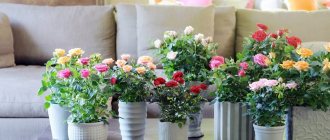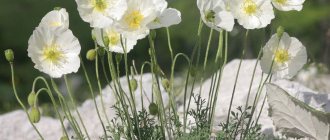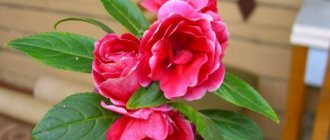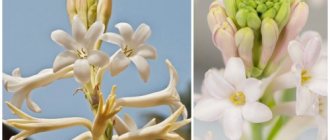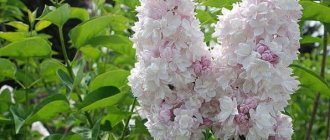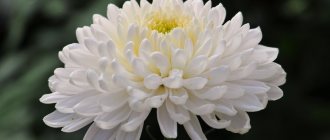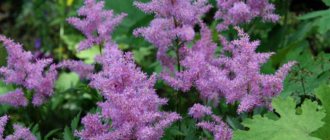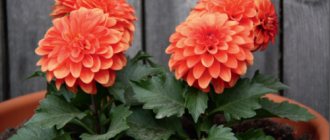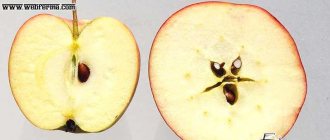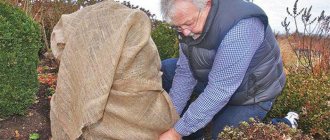Poppy is a beautiful, showy plant with surprisingly expressive flowers. Bright, rich color petals attract everyone's attention and leave no one indifferent. Many famous artists chose these plants as subjects for their paintings. Images of oriental poppies can be found not only in paintings, but also everywhere - on pieces of furniture, dishes, and clothing. Among all the varieties of poppies, the oriental poppy is one of the most famous, beautiful and popular.
Description
Oriental poppy, also known as small-leaved poppy, is a genus of perennial rhizomatous herbaceous plants from the Poppy family. The species' homeland is dry subalpine meadows, rocky slopes of the Caucasus, Iran and Turkey.
The maximum height of the bush does not exceed 90 cm.
The peduncle, also known as the stem, is strong, erect or slightly curved, bare or covered with few, small leaves. The lower part of the stem is characterized by dense pubescence with white hairs.
The root system is powerful, the taproot holds tightly to the ground. Such a root provides the plant with useful substances and, in the dry season, with the necessary moisture.
The main green mass is formed by large basal leaves on long petioles up to 6 cm long. Elongated, lanceolate up to 30 cm leaf blades are pinnately dissected, ornamental, rigidly pubescent, light green in color. The stem leaves are similar to the basal leaves, only the uppermost ones are much smaller and sessile.
Single flowers are cup-shaped and, when fully opened, reach 10-20 cm in diameter. Petals in the amount of 4-6 pieces, large-textured, whole, round, large 4-6 cm in diameter, rich, bright orange-red color or pink-red with or without a black spot at the base. Stamens, dark at the ends, widened. Numerous oblong anthers of purple or black color.
The flowering period is June-July, the lifespan of one flower is 3-5 days. The fruit is a capsule 4-7 cm in length, obovate, glabrous, brown or gray-green in color, covered on top by a convex or flat disk, containing many dark gray or black-brown small seeds - grains. 1 g contains up to 9 thousand seeds. The seeds ripen completely by mid-August.
Oriental poppy: characteristics and types
Poppy is a very beautiful and bright flower, both delicate and strong.
This plant has been known to man since ancient times. At that time, poppy was used not only as food, but also to treat many diseases. The crop belongs to the well-known Poppy family and is considered a herbaceous plant. Today, there are more than a hundred species in nature, and most of them are found in the regions of our country.
The plant has a milky sap, and it is not for nothing that the name of the genus to which poppy belongs is translated from Greek as “milk”.
Let's get acquainted with popular varieties of oriental poppy.
Oriental poppy Perris White
This variety is distinguished by white petals with black dots at the base. Bright red flowers are occasionally found. The plant reaches a height of about a meter. The leaves at the base grow quite large, but the closer to the flower, the smaller they are. The diameter of the buds is from 17 to 19 cm. The first flowers appear at the end of May. This process can be observed within two weeks. At the end of flowering, boxes with small seeds appear. After ripening, the grains fall out on their own. If the weather is warm, the poppy can bloom twice a year - in spring and autumn.
Oriental poppy Garden Glory
The appearance of this flower is mesmerizing: it is distinguished by double or ribbed petals of a pink hue. The height of the plant ranges from 70 to 90 cm.
Oriental poppy Diamond
The flowers of this species have a scarlet hue with a dark center. Flowers bloom on tall peduncles reaching a meter in length. This variety is frost-resistant, but loves sun and moderate soil moisture.
Blue Moon
This variety was very successfully bred by breeders. The flowers are large and 22-26 cm in diameter. When opened, the buds acquire a soft blue hue with a dark center.
Border Beauty
This variety has traditional red flowers without black spots. The plant is presented in the form of a beautiful compact bush, the height of which does not exceed 75 cm. On each of them, many buds with double petals are formed. This variety is frost resistant.
Kleine Tangerine
This species is characterized by abundant flowering. When open, the buds have semi-double corrugated petals. The height of the stem reaches 55 cm. The flowers are salmon-colored.
All of the above types are unique in their own way. If you make the right choice, the oriental poppy will delight passers-by with its incredibly beautiful blooms for a long time.
Planting and care
The perennial plant is completely unpretentious, frost-resistant, planting and care will not cause any difficulties. Even with minimal attention to his person, he is able to delight with lush, bright colors.
Selecting a location
Oriental poppy is a light-loving plant, prefers bright, open areas, and grows quietly in light shade. When planning a planting site, you should know that poppies look most impressive in the center of the flower garden, in sunny meadows.
All representatives of the Poppy family react extremely poorly to any kind of transplantation. As a result, the planting site must be chosen with special care, since the poppy will grow in this place for many years. The best option would be a small hill, since poppy does not tolerate constantly wet soil and stagnant water. If it is not possible to create such conditions, a good drainage layer is made to drain excess water before planting.
The flower stalks are quite tall and can break under the influence of wind. To prevent this situation, you should install supports and tie the stems to them.
Oriental poppy can live on almost any permeable soil, however, like all plants, it grows and blooms more actively in fertile, loose soil.
Poppy responds to fertilization with rapid growth, lush and bright flowering. Fertilizers can be introduced throughout the entire growth period. On poor, sandy soil the plant blooms less luxuriantly; on such soil the poppy flowers become smaller.
In one place, the poppy blooms profusely and actively for no more than 5-7 years, after which it should be moved to another place. As the poppy bush grows, it can take up a lot of space. In order not to thicken the plantings, the distance between plants should be approximately 50-70 cm.
Watering
Throughout the entire growing season, oriental poppy requires timely, moderate watering. The soil around the plant should not dry out, but flooding it with water is also dangerous; excessive watering and stagnation of water can cause root rot and death of the plant. The long stem stem can go deep into the ground, providing the plant with nutrients and extracting moisture from the soil, as a result of which the flower can remain without watering for a long time.
Temperature
The plant is heat-loving, but at the same time frost-resistant; in the cold season, it can survive temperature drops to -35 degrees without additional shelter.
Transfer
The plant really does not like transplantation; this procedure should be resorted to in cases of extreme necessity, when there is a threat of death of the flower. Transplantation is carried out in the fall, after flowering has completed. It is necessary to try to remove the flower by the roots while preserving the clod of native soil. And given that the poppy root is long, you will have to do this very carefully, trying to dig it out completely and not damage it.
Trimming
After flowering is completed, the oriental poppy bush is pruned to the very root. Since, after the flower withers, all the foliage turns yellow and falls off, the bush loses all attractiveness. After some time, new leaves will appear from the rosette, slightly smaller in size than the previous ones. Complete pruning is carried out if there is no goal to collect seed material.
If there is a need to preserve poppy seeds, the bush is pruned only after the seed pods have ripened. After collecting the seeds, the bush is pruned close to the ground.
Wintering
The plant is quite frost-resistant; shelter for the cold season is not necessary; if desired, you can cover the poppies with mulch.
Perennial care
- Watering. Regular, but not very abundant.
- Removing weeds. A mandatory care procedure, since the poppy is very clean.
- Loosening the soil. Provides air flow to the roots.
- Mulching. It will protect poppy plantings from weeds and help retain moisture in the ground.
Poppy responds well to mulching
- Garter. A tall stem (1 m long) can break or take a horizontal position under the weight of large flowers. Therefore, even at the bud-laying stage, the oriental poppy requires support: a stick or branch and a string. Nylon threads are not suitable because they damage the stem.
- Trimming. After flowering, trim dead foliage level to the ground. In autumn, new greenery will appear on the bush.
Attention! Oriental poppy can withstand harsh winters with temperatures down to -40 °C.
Diseases and pests: treatment methods
Insect pests rarely attack the plant, mostly only aphids. But various diseases can often affect poppy. If simple maintenance rules are violated, the oriental poppy can get sick:
- black spot fungus;
- powdery mildew;
- root rot.
If affected parts of the bush are found, they are immediately cut off and destroyed by burning. To prevent further spread of the disease, the plant is treated with Bordeaux mixture, copper sulfate, and Maxim and Topaz fungicides.
What else you should know: Oriental poppy contains opium
When choosing poppy varieties for planting in the garden, you should keep in mind that some of them contain opioids, which are classified as narcotic substances.
The law prohibits the cultivation of plant varieties containing opium. It is not difficult to identify prohibited varieties; they have a large seed pod. In decorative varieties it is small.
Do not forget that growing oriental poppies may result in an administrative fine if the number of bushes does not exceed 9 pieces. If there are 10 or more plants, the gardener may be prosecuted.
How to propagate oriental perennial poppy
Oriental poppy can be propagated in different ways - by dividing the bush, cuttings and seeds.
The seed method is the most accessible and simplest, which is why, in most cases, it is used for poppy propagation.
Seeds are sown in early spring or late autumn. To obtain a healthy, strong plant, poppy seeds must undergo stratification. For this purpose, sowing into the soil is carried out when there is a high probability of frost. In autumn, poppy is sown in November, when the soil has cooled and its temperature does not rise above 3-5 degrees, otherwise the poppy may germinate and the seedlings will die with the onset of winter. Because cold soil and low air temperatures are not an obstacle to seed germination. When sowing in spring, the seeds are sown as soon as the snow melts.
Flowering of a plant obtained from seeds should be expected no earlier than after 2-3 years.
All vegetative methods require preliminary rooting; these methods are more labor-intensive. Oriental poppy does not always take root well in a new place; it must take at least 2-3 years for the plant to produce color.
A large, spreading bush at the age of 3-5 years can be divided, thereby propagating it.
With this method, you don’t have to dig up the entire bush; you just need to carefully separate a fragment of the rhizome from the side. In various literature on gardening, it is advised to divide the bush in the spring before flowering, or after - in the fall. In any case, the rhizome should be divided, preserving a large lump of native soil, since the roots are quite fragile and can be easily damaged.
Division is also carried out when the plant is completely dug out. It is good to divide a poppy bush when transplanting an adult plant to a new location. A large bush is carefully divided into parts using a knife. The fragments are planted at a distance of 50-70 cm from each other.
The propagation method by dividing the bush allows you to obtain a plant identical to the mother, with a 100% guarantee of preservation of the varietal characteristics of the species.
However, young plots are very vulnerable and can die under the influence of bad weather. With the onset of cold weather, in the first year of life, such plants need shelter.
Propagation by green shoots or cuttings
Side shoots are separated from the bush; you can choose any, but gardeners recommend using weaker ones for this method. For rooting of cuttings and better development of the root system, the shoots should be kept in “Kornevin” or another root formation stimulator for the next 24 hours. Next, the cuttings are planted in fertile, loose, moist soil and covered with a transparent cap. After the roots have formed, the cuttings are transplanted to a permanent place in the garden.
Where to buy and how to plant perennial garden poppy
You can buy garden poppy seedlings from amateur flower growers on the market; they are sold by garden centers and online stores. If you wish, you can purchase not seedlings, but poppy seeds and grow it yourself.
The plant is not particularly demanding of care and is not afraid of low temperatures.
It is recommended to choose areas for planting perennial poppies that are well lit by the sun, but you can get lush flowering by planting in a slightly shaded area. But when choosing a location, you should take into account that flowers look most advantageous against a background of greenery in brightly lit meadows.
The plant does not really like transplanting, so it is advisable to immediately choose a site where the bushes will grow for many years. An excellent option would be a plot on a small hill - poppies do not like lowlands, constant dampness and stagnant groundwater. If the site is located in a lowland, then you will need to take care of arranging a drainage layer.
Since the flower stalks are quite tall, you should think in advance about installing supports for tying them - this will prevent the flowers from breaking off in strong winds.
Although the oriental poppy will survive in any permeable soil, it, like other plants, will look more attractive when planted in fertile, loose soil.
The application of fertilizers is encouraged, the greenery of the leaves will become brighter, the flowers will be larger. It is advisable to fertilize throughout the entire growing season. The optimal growing period in the same area is from 5 to 7 years, then the plants will need to be transplanted to another place.
Given the tendency to grow, dense plantings should not be done; it is best to plant bushes at a distance of 55-70 cm from each other.
Let's watch an interesting video about perennial poppy and its cultivation:
Sowing technique
After choosing a permanent place for the poppy, prepare a site for sowing seeds. The soil is loosened, stones and roots of various plants are removed. To provide nutrients for future plants, organic fertilizers, humus or compost are added to the soil.
Sowing seeds in autumn
The prepared soil is divided into grooves up to 3 cm deep, at a distance of 5-10 cm from each other. They bring in the seeds and sprinkle them with soil. You should not bury poppies too deeply into the soil; a large layer of soil can prevent the seeds from germinating. They simply do not have enough strength to break through to the surface. The seeds will “wake up” as soon as the snow melts and the soil warms up by 3-5 degrees.
Sowing seeds in spring
As soon as the snow melts and the soil temperature becomes slightly above 5 degrees, the seeds are added to the prepared soil. If desired, you can make grooves, or you can simply sprinkle the seeds on the surface of the ground, while they are sprinkled with a small layer of sand. When planting poppies in spring, the beds should be covered with cellophane to create a greenhouse effect. Shoots will appear in 10-14 days; during this period, the soil is kept moderately moist.
As soon as the sprouts appear, the greenhouse is removed. Young plants should be protected from direct sunlight. The weather in spring is extremely unstable, there is a high probability of frost. In such cases, young shoots are covered with film or other covering material.
In order not to thicken the plantings, the seeds are laid out at some distance from each other. Otherwise, the seedlings will have to be thinned out when the second leaf appears.
Classification of popular perennial poppy species
Shrub rose in a pot - can it be grown at home?
Poppy is one of the most vibrant flowers. Until relatively recently, it served as a decoration for gardens, orchards and fields. The flowering period begins in the first days of summer. Today, most gardeners do not dare to plant them on their plots for fear of attracting the attention of drug addicts. Only some species containing minimal amounts of narcotic substances are actively cultivated. All poppies do not tolerate frequent transplants.
Oriental perennial or Turkish poppy (Papaver orientale)
Tall (up to 90 cm) perennial. It reaches a meter in diameter. The foliage is beautiful, pinnately dissected, coarsely hairy. During the flowering period it is covered with single, large double, semi-double and single flowers. It can be distinguished from other poppies by large black spots in the inner part of the flowers and stamens with the same coloring. Different types of oriental poppy may differ in flower shape and color.
A rosette of leaves is formed in May, and flowers appear in June-July. In August, the foliage dries out, and after the end of the flowering period, a small box forms in place of the flower. By September, the leaf rosette may form again, and in some cases the flowering period is repeated, but full-fledged flowers rarely appear.
Alpine (Papaver alpinum)
A variety of alpine poppy
The shortest and short-lived perennial that renews itself by self-seeding. The maximum height to which alpine poppy can grow is 30 cm. It blooms earlier than other poppies - in May-June. The maximum lifespan of one plant is 3 years. It blooms mainly with white and yellow flowers, the diameter of which can reach 5 cm. It takes root well in rock gardens.
Important! Alpine poppy is picky about soil, preferring well-drained limestone.
Hollow poppy (Papaver nudicaule) or saffron poppy (Papaver croceum)
A short-lived perennial (maximum lifespan is 3 years), which reproduces well by self-sowing. The bluish foliage of the plant is collected in a rosette. The maximum height of peduncles is 30 cm, the diameter of flowers is 5 cm. It blooms in white, yellow, orange from May to September.
Poppy (Papaver rupifragum) or Spanish poppy (Spanish Poppy)
A perennial plant, it is widely known among gardeners due to its long flowering period (blooms all summer) and dense foliage of a silvery hue. Needs regular removal of dried inflorescences. Blooms most abundantly in June.
Why doesn't the oriental poppy bloom?
There may be several reasons why a plant does not please with bright flowers:
- The plant is too young. Oriental poppy grown from seeds spends the first few years developing the root system. By the second or third year of life, the plant can produce 1-2 peduncles. Only after this can you expect full, lush, bright flowering from the bush.
- Inappropriate place for a flower. If the plant grows in a very shaded area, this can significantly affect the formation of flower buds.
- Mistakes in flower care. Although the oriental poppy is considered a rather unpretentious flower, a lack of attention and lack of proper care can cause a lack of buds. Too deep and active loosening can cause damage to the root system. The plant spends all its energy on restoring and healing the wound.
- Transfer. “Moving” from one place to another is very difficult for the plant. In most cases, the next year after replanting the bush may be left without flowers.
You should know that according to current legislation, the cultivation of oriental poppy in Russia is prohibited. And all because of the presence of narcotic and hallucinogenic, poisonous substances in its composition. Thus, the oriental poppy contains oripavine, which is included in the official list of narcotic drugs.
If you have any doubts whether the plant is prohibited or not, you should pay attention to the seed pod; if it is large, then most likely this type of poppy is prohibited and should not be grown.
For cultivating oriental poppy in small quantities, no more than 6-9 bushes, an administrative fine may be imposed. Even for one bush you can be fined. Criminal liability comes only for the cultivation of “drug-containing” plants on a large or especially large scale. To do this, there must be at least 10 oriental poppy plants on the site, regardless of their size.
Oriental poppy in a flower garden. Combination with other plants
In addition to all the advantages, poppy varieties also have several disadvantages that do not depend on agricultural technology and care: a short flowering phase, rapid withering, and after this a rapid loss of decorativeness. The leaves turn yellow, die, and an empty space remains in place of the flower, which can be seen even in the photo. These features must be taken into account when planning the landing site.
Poppy in landscape design
It is best to plant poppies in the background of a flower bed or garden, and in front of it - crops that will decorate the emptiness in the garden bed. These can be spreading daylilies, cinquefoils, geraniums, cereals, asters. It will be successful to grow and combine poppy with oregano, Korean chrysanthemum, kohia, mantle and multifloral euphorbia.
Cosmea, lavatera or tobacco will also make a beautiful composition with a bright perennial. It looks good with crops painted in lilac tones, such as irises. You can plant oriental poppy in open ground in groups or alone, decorating flower beds, borders, mixborders and even rocky gardens. It is quite capable of becoming both a bright element of a harmonious ensemble and a spectacular highlight in a flower garden.
Poppy propagation
Questions often arise regarding flower propagation. The methods are not fundamentally different from the approaches known to everyone:
- collecting and sowing seeds,
- by cuttings,
- dividing the bush.
Method 1 . Poppy seeds are ready for harvesting when the seed pod is completely dry. You can store them directly in it or pour small balls into glass containers. Often, poppy heads are wrapped in gauze without removing them from the bush; in this case, the seeds will not spill onto the ground.
Poppy seeds are very small and should not be buried when planting; just press them down a little and cover them with gardening material. You need to water the planting area very carefully and sparingly. You can use stems with five formed leaves as seedlings.
Method 2 . Side shoots are separated from the bush; most often, weak cuttings are taken for these purposes.
They must be kept in a disinfectant solution for 24 hours; root-forming solutions are also used, after which the cuttings are planted in moist and loose soil. Before roots appear, cover with a transparent disposable glass or film. Rooted shoots are transplanted to the intended place.
Method 3 . This type of propagation of oriental poppy can guarantee the preservation of varietal characteristics of the new bush. But it is not advisable to use it, since poppy plants are difficult to tolerate transplantation and can hurt for a long time after it.
If such a need nevertheless arises, you need to immediately remove the entire poppy bush along with a lump of earth immediately after flowering (or in May, before the bush begins to bloom) and carefully divide it into parts. Plant the cuttings in the ground and be sure to cover them with garden material during the first winter season.
By observing all the conditions, you can achieve the desired result without any problems.
Features of planting
Before planting the plant, you need to make sure that there are no other varieties of poppy nearby. The presence of other species nearby can lead to loss of varietal qualities, as poppies begin to cross-pollinate. Varietal qualities, such as color, terry, corrugation, texture, may be lost.
Soil preparation
Before planting a plant, you need to understand that it does not tolerate any movement due to the structure of the root . It can grow in one place for more than 10 years, so you need to carefully choose a place and exclude all possible reasons for further transplantation.
It's better if the place is open. A large amount of sunlight should fall on it, since in nature the flower grows in fields and meadows. Water should not stagnate in place, since if the area is constantly flooded, the root will begin to rot and the plant will most likely die.
Partial shade is allowed, but the place should not be completely shaded. Insufficient sunlight will cause the plant to wither and wither. Growth will stop and the flower is unlikely to bloom.
Before planting the plant, you need to fertilize the soil and remove weeds. You can also loosen the soil and be sure to dig it deeply, since the main root of the poppy grows quickly deeper. Fertilizers are used:
- compost;
- mineral supplements.
In general, oriental perennial poppy is an unpretentious crop. Rich fertile soils are not necessary for its growth. The plant will thrive in sandy loam soils. The quality of the soil, its permeability and nutritional value affect the general condition of the plant, as well as the size of the flowers and their number.
Planting seed
Due to their size, poppy seeds do not germinate well when planted deep . They are usually sown on the surface of the soil and sprinkled with a little soil. In order to speed up the process, gardeners cover the seeds with glass or film. After the plant germinates, the cover is immediately removed.
It is important to keep the area moist. Water should not stagnate, otherwise it will lead to rotting of the seeds. It is better to water with a sprayer - this way the seeds will not leave the soil under the pressure of water, and the humidity will be maintained at a moderate level.
After the plants have sprouted, they need to be thinned out. It is customary to leave 10 cm or a little more between adjacent flowers. After some time, thinning is repeated and the healthiest poppies are left. Now the distance between them should be 35 cm. In the future, all free space will be occupied. Oriental poppies will bloom next year.
The transplant must be done carefully. Damage to the roots can lead to the death of seedlings. Flower growers advise moving the plant to another place after at least 5 leaves appear on it. It needs to be replanted together with a lump of earth. The larger it is, the higher the likelihood that the plant will take root in a new place and not die.
Experienced gardeners plant valuable varieties with seedlings. Seeds are sown in containers and placed in a warm place with sufficient lighting. Poppies peak after the appearance of the second true leaf. After the fifth leaf appears, the plants along with the soil are transplanted to a permanent place.
Features of garden care
The tops of large specimens at the beginning of the flowering period will be weighted with buds, so they will need support. To tie poppies, it is recommended to use wide ribbons made of natural fabrics, since thin or nylon ropes can easily damage the stem.
After the flowering period is over, the dead parts are cut off at ground level. The seeds are collected after the fruits ripen.
Young plants need special care - they need to be watered frequently. The divided bushes should spend the first winter under cover of dry leaves and spruce branches. In the future, plants will be able to overwinter without shelter.
Poppy can withstand frosts down to -40°C. Mature bushes do not require additional shelter for the winter, but the safety of rare varieties should be taken care of; they should be covered with dry leaves for the winter.
What conditions do poppies like?
Perennials such as oriental poppy prefer loose, sandy loam soil in which water does not stagnate. If the soil is deprived of nutrients and its acidity is increased, the flowers will become smaller every year. The most suitable place for planting is areas flooded with sunlight. The plant will not disappear in the shade either, but the buds will set worse.
Important! Some crops, when planted in shaded areas, refuse to bloom.
What is the plant afraid of?
In general, poppy is an unpretentious plant, but in order to achieve abundant and long flowering, the gardener must water the beds on time, trying not to flood them. The plant is afraid of both prolonged drought and stagnation of water.
Watering
It can go without watering for a long time, but the lack of moisture affects the quality of flowering. With abundant watering, stagnant water can damage the root system of the plant.
Mulching
Poppy in the garden
The land in which poppies grow is mulched with peat, but in the absence of peat, you can use any mulch. Mulching relieves the gardener of the need to regularly water the beds and get rid of weeds.
Loosening
Loosening must be carried out before sowing poppies and in the process of caring for adult flowers. The earth is loosened to a depth of 3 cm.
Feeding
Feeding is provided by humus and minerals. The first is scattered over the land in such a way that for each square meter there are 10 kg of fertilizers. Minerals are distributed in such a way that there is at least 30 g per 1 square meter.
Transfer
The flower is replanted carefully so as not to damage the root system. They dig it up together with a lump of “native” soil and immediately transplant it to a new place. The recommended minimum distance between the two closest plants is 50 cm. It takes root well in places where large-leaved hydrangea (hydrangea macrophylla) was previously grown.
